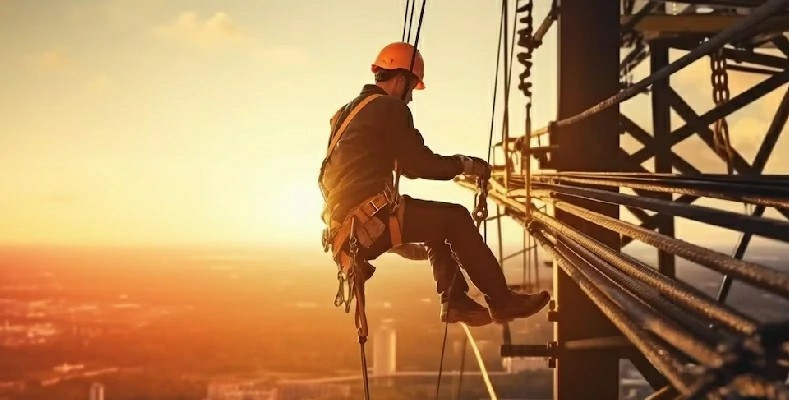


 349,500 Offered Certificates
349,500 Offered Certificates
 24/7 Online Training
24/7 Online Training
 Money Back Guarantee
Money Back Guarantee
 Fully Accredited Courses
Fully Accredited Courses

Created at: 22-02-2025 15:47
Working at heights presents its own set of challenges, but the conditions of the weather can significantly exacerbate the risks involved. Understanding how various weather factors—such as wind, rain, and icy surfaces—impact safety is critical for any worker undertaking tasks at elevated levels.
The combination of falling from a height and adverse weather conditions can create dangerous scenarios, leading to serious injuries or fatalities. It’s vital to recognize how the different elements of weather can affect both the worker and the work environment.
Strong winds can destabilize workers, especially if they are using ladders or scaffolding. Wind gusts can push workers off balance, which makes it essential to assess wind conditions before commencing work at heights. OSHA suggests that wind speeds over 30 miles per hour pose a significant risk.
Rain is another weather condition that can create hazardous situations while working at heights. Wet surfaces increase the likelihood of slipping and falling, making proper footwear and gear essential.
Snow and ice can create hazardous conditions by making surfaces extremely slippery. Even a thin layer of ice can lead to serious falls.
Working in extreme temperatures, whether hot or cold, also poses risks. Hot weather can lead to heat exhaustion, while cold conditions may lead to hypothermia.
Proper training is essential for ensuring that workers understand the risks associated with various weather conditions when operating at heights.
Implementing best practices is the final step in ensuring safety while working at heights in challenging weather conditions. Here are some expert recommendations:
Working at heights can pose severe risks, especially when adverse weather conditions come into play. By acknowledging the hazards associated with wind, rain, snow, and extreme temperatures, and investing in comprehensive Working at Heights training, employers and employees can significantly enhance safety. Don’t underestimate the power of proper training and preparation—contact us at [email protected] for certified Working at Heights training courses in Dublin, Cork, and Galway.